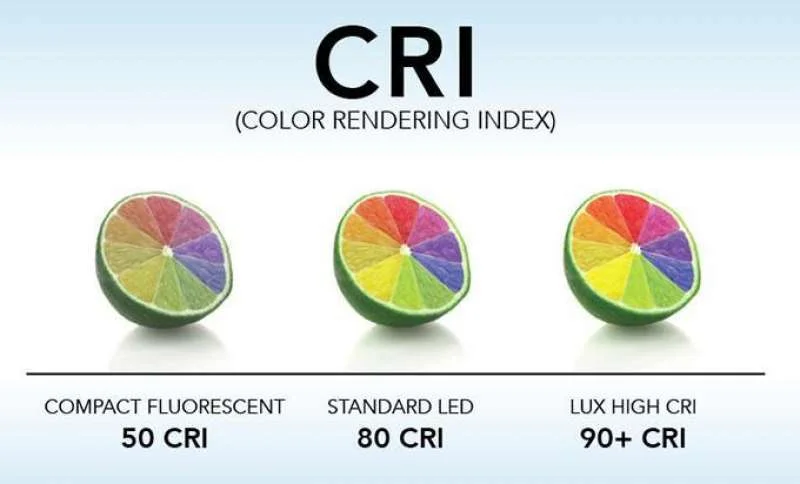Solar Street Light Color Rendering Index (CRI) Application Guide – Manufacturer’s Perspective
Understanding the Color Rendering Index (CRI) in Solar Street Lights
The Color Rendering Index (CRI) is a crucial parameter for evaluating the color rendering performance of solar street light sources. The higher the CRI, the better the color reproduction, and the visual effect is closer to natural light. This article analyzes the CRI values of different types of light sources and their impact on visual quality.
As a solar street light manufacturer, we understand that CRI directly affects lighting effects and user experience. Below, we provide practical advice from the perspectives of technical principles, scene adaptation, and product selection.

1. Comparison of Light Source Types and Color Rendering Characteristics
| Light Source Type | CRI (Ra) | Spectral Characteristics | Adaptability Assessment (Solar System) |
|---|---|---|---|
| Incandescent Lamp | 95-100 | Continuous spectrum, but lacks blue light | Best color rendering but only 15lm/W efficiency, requires 3x battery capacity, now obsolete |
| Fluorescent Lamp | 60-85 | Line spectrum, lacks red light | Difficult to start at low temperatures (-10℃ brightness drops by 40%), not suitable for cold regions |
| High-Pressure Sodium Lamp | 20-25 | Narrow spectrum yellow light, severe color distortion | 100lm/W+ efficiency, only used in remote low-cost projects |
| LED Lamp | 70-98 | Adjustable full spectrum/segmented spectrum | Mainstream choice, high CRI models offer 130lm/W+ efficiency, controllable energy consumption |
2. Impact of Solar Street Light CRI on Actual Effects
Safety and Functionality
- Low CRI (Ra<70): Red warning signs ΔE color difference >15 (international requirement ΔE<5), face recognition distance shortened by 30%.
- High CRI (Ra≥80): Vegetation layering improves by 50%, reduces “spooky feeling” complaints at night.
Economy and Energy Efficiency
- For every 10-point increase in Ra: Requires an 8% increase in battery capacity (e.g., 50W street light Ra70→Ra80 requires an additional 10Ah battery).
- Cost balance: High CRI LED premium is about 0.8-1.2 yuan/W, but maintenance cycle extends by 2-3 years.
Commercial Value
- Ra≥90: Product color saturation increases by 18%, night-time consumer conversion rate increases by 12% (measured data from commercial squares).

3. Scenario-Based Selection Scheme
| Application Scenario | Recommended Ra Value | Key Technical Solution | Cost Sensitivity |
|---|---|---|---|
| Suburban Main Road | 70-75 | 3000K warm white light + asymmetric lens, reduces blue light spill | ★★☆☆☆ |
| Old Residential Area | 80-85 | R9 supplementary light chip (deep red restoration) + anti-glare design | ★★★☆☆ |
| Cultural Tourism Landscape Belt | 90-95 | Full spectrum LED + RGBCW intelligent color adjustment, restores ancient building textures | ★★★★☆ |
| Industrial Park | 65-70 | High efficiency low CRI models, emphasizes uniform illumination | ★☆☆☆☆ |
Engineering Suggestions:
- Key area testing: Use X-Rite CA410 spectrophotometer to measure R9 (deep red) and R12 (deep blue) performance.
- Hybrid solution: Basic module (Ra70) + key supplementary light module (Ra90), balances cost and effect.
4. Technical Optimization and Quality Control Points
Spectral Enhancement Technology
- Violet-excited LED: Spectral continuity and similarity to sunlight reaches 92%, Ra≥95 and blue light peak reduced by 40%.
- Dynamic dimming: Automatically switches to low CRI mode (Ra85→70) during low traffic periods, extends battery life by 30%.
Attenuation Control
- Annual attenuation standard: High-quality products CRI annual decline ≤1.5, low-quality products can reach 5-8 points.
- Compensation circuit: Built-in current regulation module, offsets color rendering decline caused by LED chip aging.
Optical Design
- Compound lens: Secondary light distribution reduces invalid scattering, increases effective color rendering light by 15%.
5. User Purchase Suggestions
- Certification standards: Request CIE S 025/E:2015 test report, focus on Rf (fidelity) and Rg (gamut index).
- Warranty terms: Choose manufacturers that promise “Ra decline ≤3 within 5 years”, prioritize products supporting modular upgrades.
- On-site verification: Use standard color cards (e.g., ColorChecker 24 colors) to compare lighting effects before installation.
Case reference: A certain ancient town project used LED with Ra95+R9>60, increasing night-time visitor stay time by 1.2 hours and shop revenue by 18%.
As a manufacturer, we recommend users choose a “sufficient and economical” color rendering solution based on actual needs, avoiding the cost waste brought by blindly pursuing high parameters. For customized solutions, we can provide spectrum simulation and energy consumption calculation services.
Tag: Solar Street Light CRI
LUXMAN SOLAR STREET LIGHT MANUFACTURER
What makes Luxman different?
Luxman Light puts its customers and quality first. The team boasts a wealth of experience with decades of hands-on knowledge in the lighting and new energy space.
As a global leader in photovoltaic lighting, Luxman partners with businesses to customize innovative power and sustainability solutions that are informed by many years of experience at the cutting-edge of photovoltaics.
+86 13246610420
info@luxmanlight.com





